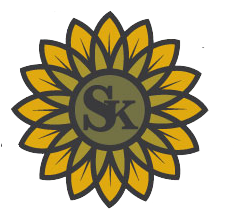The Dirty Dozen, PLUS ONE in Personal Care Products
10,500
That’s how many unique ingredients are in various personal care products we use every day.
126
That’s how many cosmetics ingredients to which the average American is exposed daily, according to an EWG survey.
0
That’s how many chemicals in personal care products – including shampoo, toothpaste, lotion, deodorant and cosmetics – are required to be tested for safety before they’re sold in the marketplace.
We are exposed to toxins and pollutants in our food, personal care products, clothing, bedding, cleaning products and environmental exposures
The Dirty Dozen, PLUS ONE in Personal Care Products
1. BHA and BHT
Used mainly in moisturizers and makeup as preservatives. Suspected endocrine disruptors and may cause cancer (BHA). Harmful to fish and other wildlife.
2. (Coal tar dyes) p-phenylenediamine, Toluene, Hydroquinone and Phenol carbolic acid
P-phenylenediamine and Coal tar dyes listed as “CI” are used in hair dyes and hair products including colours. p-phenylenediamine and Coal tar dyes are neurotoxin linked to asthma, cancer, ADD and ADHD.
Toluene made from petroleum and coal tar is found in nail polishers, synthetic fragrance and paint thinners. Toluene is so toxic that’s banned by the entire European Union and has been linked to organ toxicity and anemia.
Hydroquinone banned in UK, Asia, Japan and Australia is another chemical widely used in skincare products and anti-aging creams. Hydroquinone is a neurotoxin and cancer-causing carcinogen linked to organ failure and severe allergies.
Phenol carbolic acid used in skin lotions and beauty creams has been linked to paralysis, convulsions, coma, and even death from respiratory failure.
3. Diethanolamine (DEA), quaternium-15 (MEA and TEA) related chemicals
Used in some creamy and foaming products, such as moisturizers and shampoos. Can react to form nitrosamines, which may cause cancer. Harmful to fish and other wildlife.
4. Synthetic fragrance including Phthalates lead compounds, Parfum and Dibutyl Phthalate(used in nail care products)
Phthalates lead compounds are commonly used in skincare products since their oily texture make skin feel soft and increase the ability of the lotion to penetrate deep inside the skin. Suspected endocrine disrupter and reproductive toxicant. Phthalates including butyl ester, DBP, BBP, DEP,benzenedicarboxylic acid are banned in toys and baby products
5. Formaldehyde-releasing preservatives including DMDM hydantoin, diazolidinyl urea, imidazolidinyl urea, methenamine and quarternium-15
Formaldehyde-releasing preservatives are commonly used in straightening hair products (including Japanese and Brazilian blowouts), fertilizers, bleaching agents, food preservatives and personal care products like baby shampoos and soaps. Used in a variety of cosmetics. Slowly release small amounts of formaldehyde, which causes cancer.
6. Paraben, methylparaben, butylparaben and propylparaben
Used in a variety of cosmetics (deodorant, antiperspirant, sunscreen) as preservatives. Suspected endocrine disrupters and may interfere with male reproductive functions.
7. Oxybenzone and OMC, known as Octylmethoxycinnamate and Ureas
Both Oxybenzone and OMC are endocrine disrupters used in most skincare products and 90% of sunscreens. Amazingly these two chemicals used in sunscreens are known to be most toxic when exposed to sunshine.
8. PEGs (e.g., PEG -60)
PEG is used as filler in many personal care products including shampoos, conditioners and soaps and even burn creams including silvadene. Propylene Glycol (PEG) has been linked to impaired immune system, damages to central nervous system, cancer, developmental and reproductive toxicity, organ toxicity, and skin irritation.Studies also show that Polyoxyl 40 Stearate (listed as PEG - 40 Stearate) can contain harmful impurities like Ethylene Oxide, known to increase the incidences of uterine, brain, or breast cancer and leukemia.
9. Mineral Oil, Paraffin, and Petroleum based products
Used in some hair products for shine and as a moisture barrier in some lip balms, lip sticks and moisturizers. Can be contaminated with polycyclic aromatic hydrocarbons, which may cause cancer.
10. Siloxanes
Used in a variety of cosmetics to soften, smooth and moisten (hair spray, mousse, deodorant, moisturizers) Suspected endocrine disrupter and reproductive toxicant (cyclotetrasiloxane). Harmful to fish and other wildlife.
11. Sodium laurel or lauryl sulfate (SLS), also known as sodium laureth sulfate (SLES)
Used in foaming cosmetics, such as shampoos, cleansers and bubble bath. Can be contaminated with 1,4-dioxane, which may cause cancer. Look also for related chemical sodium lauryl sulfate and other ingredients with the letters "eth" (e.g., sodium laureth sulfate).
12. Triclosan and Dioxane
Triclosan is endocrine disrupter widely used in antibacterial cosmetics and skincare products including antiperspirants toothpastes and cleansers. According to researchers at University of California Davis, Triclosan impairs muscle function and skeletal muscle contractility. The leading author of the study, Isaac Pessah says that “Triclosan is found in virtually everyone’s home and is pervasive in the environment. These findings provide strong evidence that the chemical is of concern to both human and environmental health.”
Dioxane is a by-product of ethylene oxide commonly used in many personal care products and shampoos. Dioxane has been linked to cancer, brain damage, damages to central nervous system and kidneys and liver problems.
13. Gluten: linked to autoimmune and gut issues
Can be found labeled as hydrolyzed wheat protein, wheat germ oil, triticum vulgare germ extract or protein, avena sativa bran, protein or extracts, **much of vitamin E is derived from wheat germ oil, barley extract, samino peptide complex, hordecum vulgare, beta glucan (frequently derived from wheat).
Information is sourced from Environmental Working Group www.ewg.org www.davidsuzuki.org
